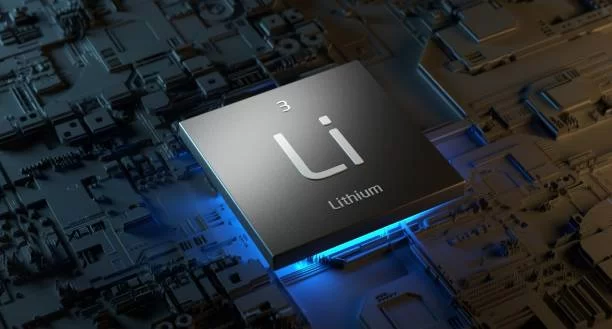Correct Charging Methods for Lithium Iron Phosphate Batteries and Precautions for Different Battery Cell Types during Charging
Charging lithium iron phosphate batteries correctly is crucial for their performance and lifespan. Here are some lithium iron phosphate batteries key points to keep in mind:

Before charging:
- Understand the battery specifications, including the rated capacity and charging limit voltage.
- Check the charging equipment and cables for any damage or potential safety hazards.
For daily charging and the right timing:
- Daily shallow cycling can be beneficial.
- Avoid deep discharging; it’s advisable to charge when the battery’s remaining power is around 25 – 30%. If the vehicle or device is not used for an extended period (more than 3 months), charge it to prolong the battery’s lifespan.
During the charging process:
- Ensure a suitable temperature environment, typically within 0 – 40°C. Avoid charging in extremely high or low temperatures.
- The charging method is important. A common approach is the constant current – constant voltage (CCCV) method. Start with a relatively constant current (typically 0.3C, where C is the battery capacity), and when the battery voltage reaches the set constant voltage value (usually around 3.6 – 3.65V, depending on the battery), maintain the voltage and charge until the current drops significantly.
- Pay attention to the charging duration and avoid overcharging.
- Use a dedicated and compatible charger, especially for high-power or specialized battery packs.
After charging:
- Avoid placing the battery in adverse conditions such as high temperatures, humidity, or strong magnetic fields.
- Periodically (e.g., once a week), perform a full charge to correct the battery’s SOC (state of charge) value.
Special considerations for lithium iron phosphate batteries include:
- Ensure accurate voltage control by the charger due to the battery’s voltage platform characteristics.
- After long-term storage, a proper “activation” process might be needed to restore performance.
Now, let’s look at the precautions for different types of battery cells during charging:
Lithium iron phosphate batteries Cells (including common lithium-ion systems such as lithium iron phosphate and ternary lithium)
General Precautions:
- Use a matched charger with correct voltage and current parameters to prevent overcharging or undercharging.
- Avoid extreme temperatures during charging. High temperatures can cause performance degradation, shorter lifespan, and even safety risks like thermal runaway; low temperatures can lead to inefficient charging and incomplete capacity filling.
- Control the charging extent. Avoid overcharging and deep discharging.
- Ensure charging safety. Avoid charging in flammable, explosive, or dangerous environments. The charging area should be well-ventilated.
Precautions for Ternary Lithium Batteries:
- Given their relatively lower safety compared to lithium iron phosphate, stricter control over temperature and overcharging is necessary during charging.
- For ternary lithium battery packs in applications like electric vehicles with a battery management system (BMS), ensure the BMS is functioning properly during charging.
Lithium Polymer Battery Cells
- Similar to lithium-ion batteries but pay attention to avoid internal short circuits due to battery deformation during charging.
- Ensure the integrity of the packaging to prevent electrolyte leakage and safety issues during charging.
Nickel-Metal Hydride Battery Cells
- Use a suitable charger.
- During charging:
– Small current and long charging time is acceptable but avoid prolonged overcharging.
– Although there is no obvious memory effect, a complete charge-discharge cycle after long-term shallow charging and discharging can be beneficial.
- Avoid charging at extremely high or low temperatures.
Nickel-Cadmium Battery Cells
- Select an appropriate charger and avoid fast charging with high current.
- Due to the memory effect:
– Discharge the battery more before charging.
– Avoid frequently stopping charging before it’s fully charged.
- Avoid charging in high-temperature environments as self-discharge increases at high temperatures.
Lead-Acid Battery Cells
- Use a matched charger.
- Regarding charging time:
– Control the charging time properly. Generally, the charging time is relatively long, but avoid overcharging to prevent water loss and thermal deformation.
– After long-term idleness, charging needs to follow certain steps for gradual activation.
- Environment:
– Maintain good ventilation during charging and avoid high-temperature and humid environments.
– Avoid charging in damp environments to prevent battery leakage and other faults.
- Maintenance:
– For maintainable lead-acid batteries, regularly check the electrolyte level and top up as needed before charging.
– Check if the electrode connections are firm.
Lithium Titanate Battery Cells
- Use a compatible fast charger. Incompatible chargers may not achieve the desired charging effect or could damage the battery.
- Due to its high-rate charge-discharge characteristics, monitor the battery’s heat generation during charging and ensure good heat dissipation.
- Before the first charge after long-term storage, it may be necessary to check the battery’s status.
Sodium Battery Cells (Sodium-ion Batteries, if applicable)
- In the early stages, strictly follow the manufacturer’s charging instructions and parameters as the industrialization is still evolving and the technology maturity needs improvement.
- Try to charge within a suitable temperature range (usually room temperature is appropriate). Extreme temperatures can affect performance and charging efficiency.
- Pay attention to the impact on the stability of the electrode materials during charging to avoid structure collapse due to improper charging.
